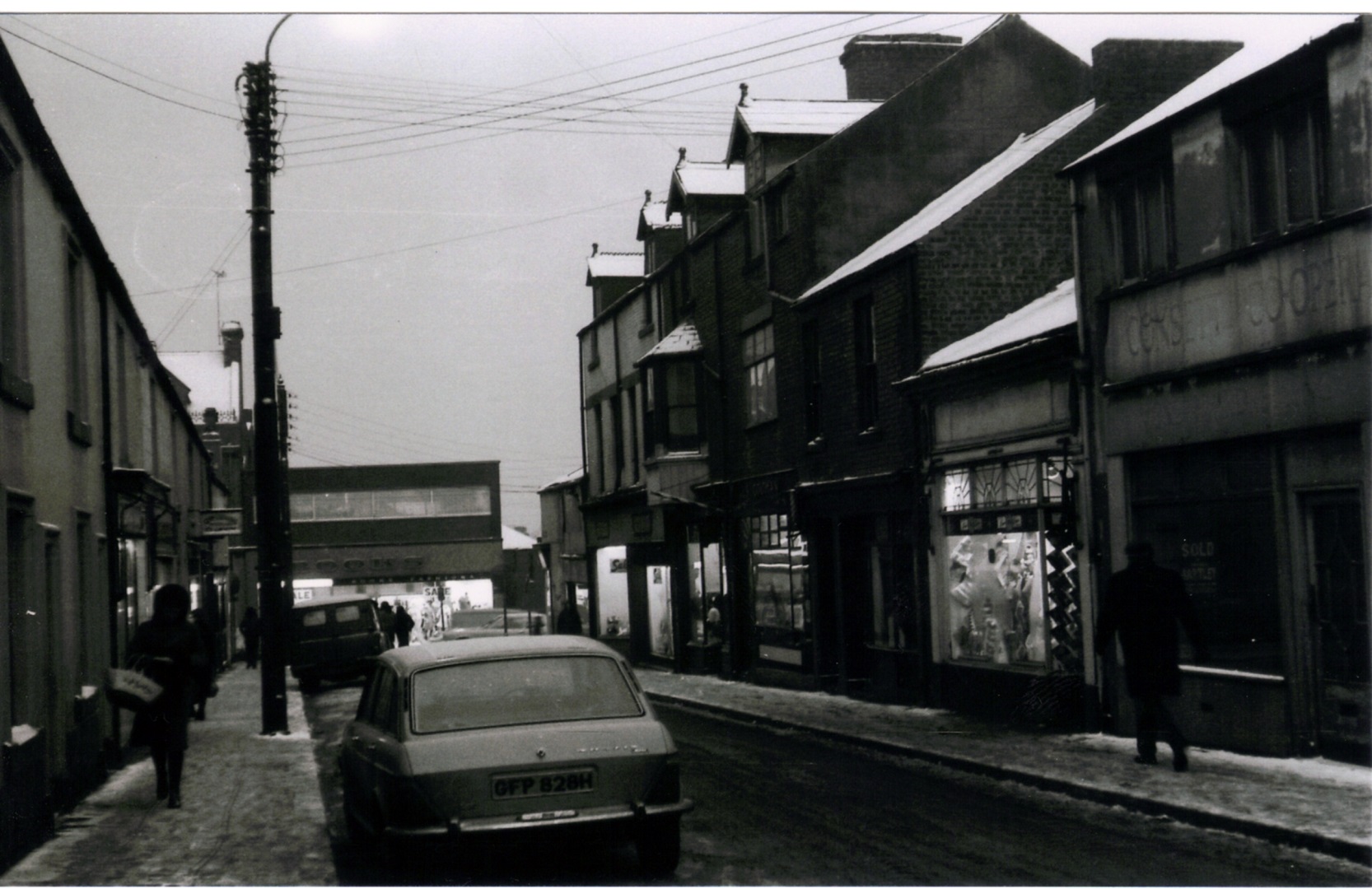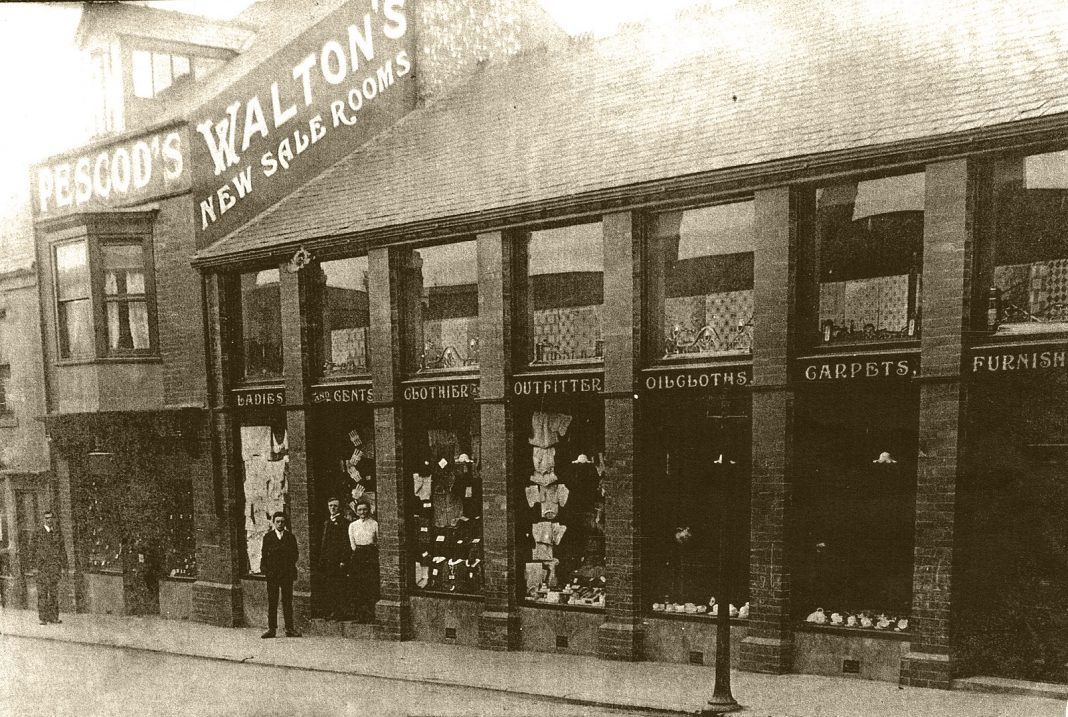Back in 1957 it was decided that Consett’s older streets had to be knocked down to make way for new builds more suited to modern life. The Company Rows which stood in the centre of the town were a main part of this clearance having been designated as slums. At that time a Mr. William Lowes, formerly of Consett and a journalist of the Newcastle Evening Chronicle wrote an article under his nom de plume of “Sheriff Hill” recalling memories of some of the early days.
He wrote about the days when a person worked for the iron and steel company or for a shopkeeper, there was no other options in those days. The 5 streets which had been scheduled for development were Raglan, Trafalgar, Church, Thomas, and Pitt Street. These had been homes for generations of Consett people and had been held in fond regards, even though life within them had been hard.
Lowes continues: ” There were, too, the famous Company Rows,’ a great block of streets with no amenities, but plenty of kind hearts in time of trouble and depression—and there was plenty of both. The Company Rows have gone and now great red buses come and go in the square. Yet we managed with Christophers’ and Rawes’ Livery Stables! What a character was Joe Lindo, who could handle anything from a four-in-hand to a tub-trap or a hearse. ”

“Trafalgar Street was then the scene of the old Company School, with old Mrs. Brannigan’s shop across the way. There, one could buy an acre of home-made toffee for a half-penny, and a yard of licorice-root for a penny. Next door was the Welsh Chapel, an ordinary dwelling-house used as a spare classroom for the school during the week.”
” The outstanding figure in Trafalgar Street during week-days was Mr. George Hyden, my old schoolmaster, a smart, stocky little chap with more personality and power than men twice his size. Lower down was one of the old theatres which produced Maria Martin and the Red Barn as regularly as a clock until it was overshadowed by the new Royal*, with Lloyd Clarence as a then very modern manager.”
” Pitt Street and some of the Company Rows had almost exclusively Catholic families and some were mixed. We, Protestant boys who had to travel from the Delves’ had to run the gauntlet and be snowballed or batoned, according to the season—the batons were just hard balls of paper on a string and no grave harm came about.”

” There were keen religious rivalries, the highlights being the notorious Kensit riots**, but gradually the community settled down and when I left there was a much better spirit about. I may be wrong, but I attributed it to two things: the close fellowship which was created in the Volunteers and, later, the Territorials when Catholic and Protestant lads died together in the 6th Durhams. The other influence was the increase in the number of Catholics into the Labour movement. Anyway, what-ever the reasons, the town became much more friendly. I hope to have a look round the old streets before they come down. . . .”
The town has since gone through many further changes including 3 bus stations and removal of the market square. The further clearances in the mid-1970’s which saw the likes of George Street, Havelock Street, Nile Street, Sunderland Street, Curry Street, Edward Street, and Nelson Street to name a few, not to mention the closure and demolition of the works, something I am sure back in 1953 no one would have dreamt would have taken place within less than a mere three decades.
Consett seems to have always been a town of demolition and rebuild. Many of the most ornate and beautiful buildings we had are now gone, but there are still some true gems left. A great guy, Ted Copeland who is sadly not with us anymore, told me years ago to look up when walking through the town. It’s amazing what beautiful architecture is still there to be seen.
*The new Royal referred to as “The New Theatre” which later became “The Globe Theatre”
**John Kensit (12 February 1853 – 8 October 1902) was an English religious leader and polemicist. His publications especially around 1898 to 1900 caused many riots and religious unrest. He concentrated on a struggle against Anglo-Catholic tendencies within the Church of England







